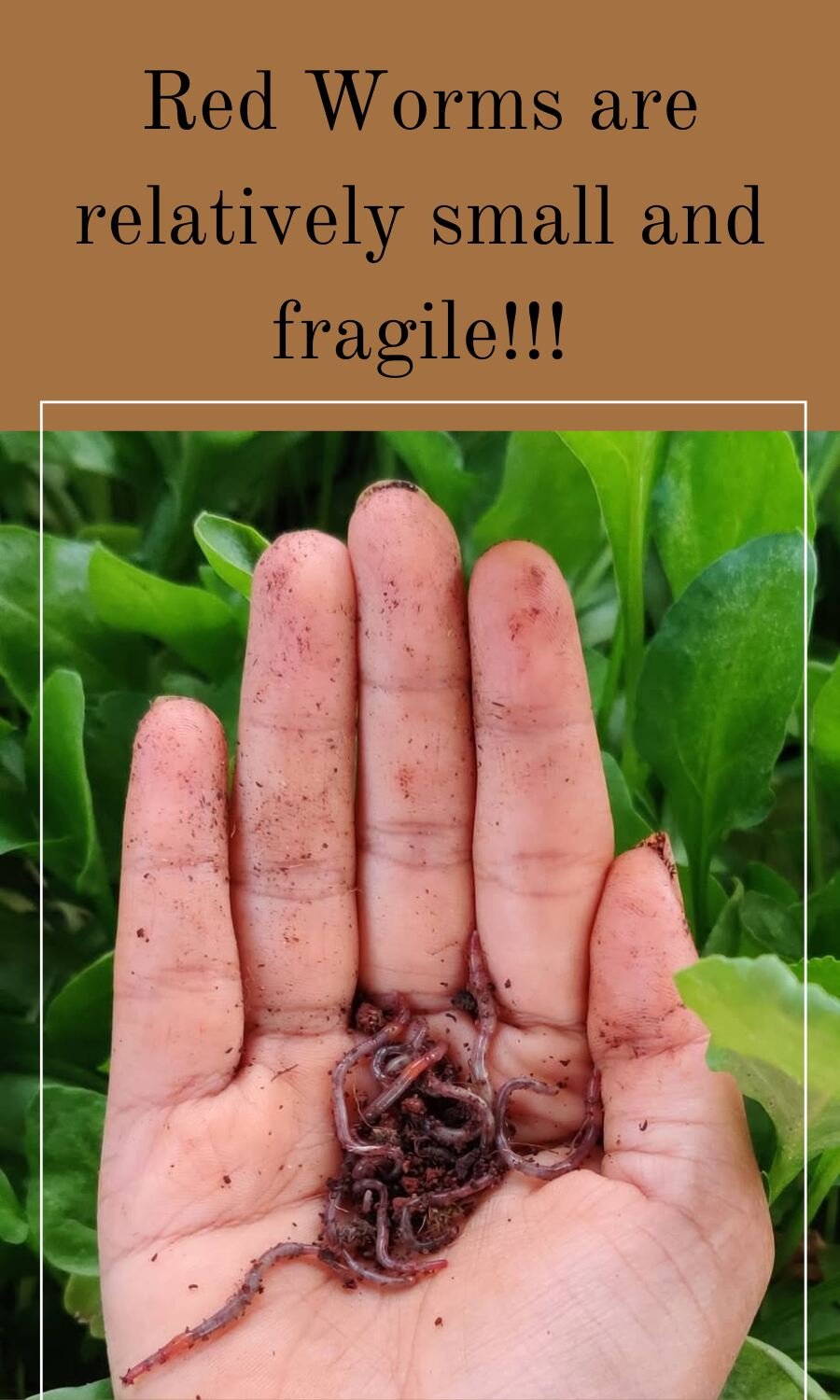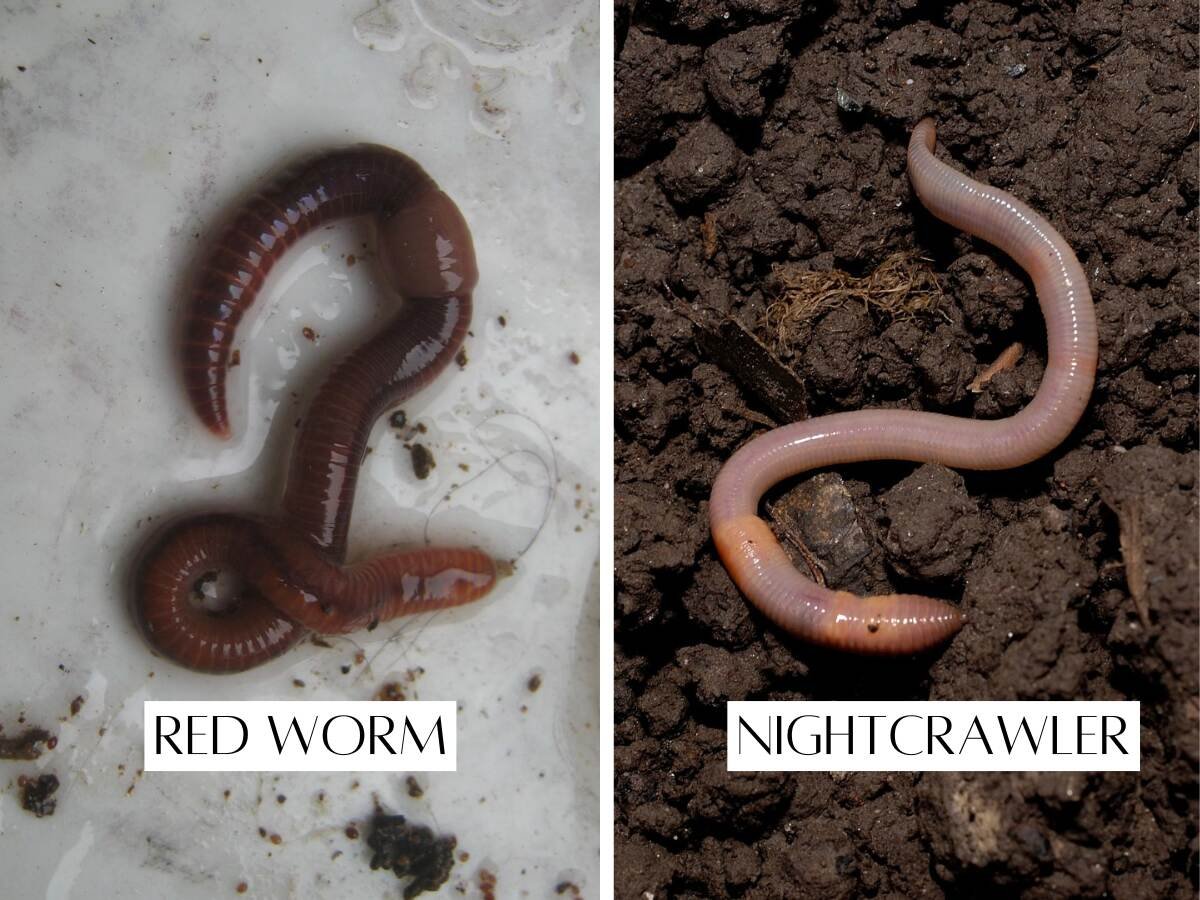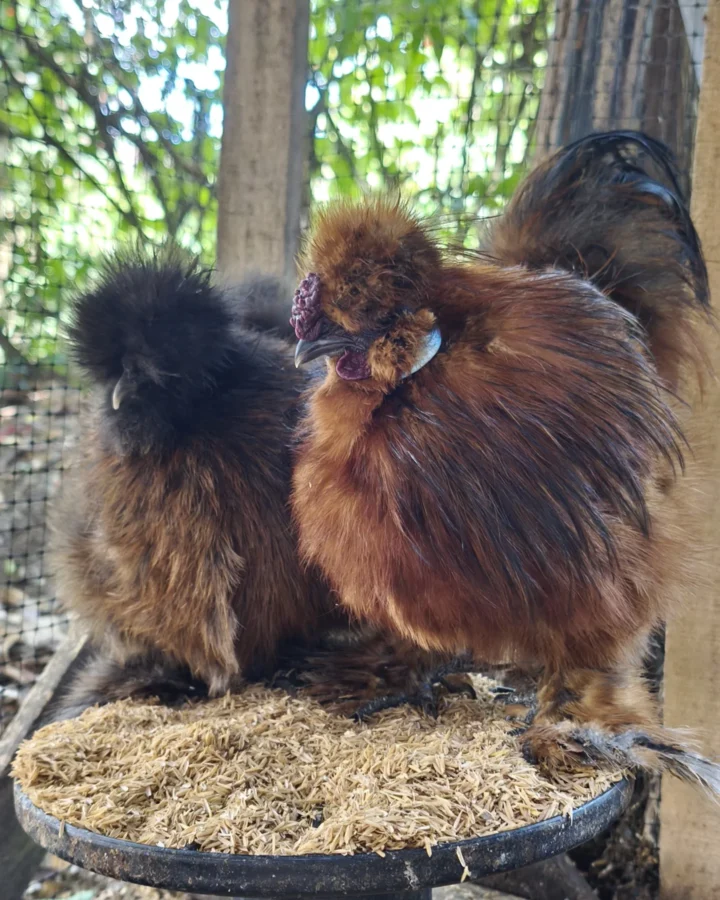Live red worms and nightcrawlers are versatile and effective baits for freshwater fishing with luring scents.
These popular fishing worms help catch fish from bluegill and crappie to walleye and catfish.
You want to know the difference between red warms and nightcrawlers to decide the target fish, techniques and type of water resources for successful fishing.
Red Worms Vs. Nightcrawlers (Key Differences)
What Are Red Worms?
Red worms (Eisenia fetida), also known as Red Wigglers, grow 1-5 inches in size.
They live in moist, organic-rich environments. They prefer 3-8 inches of soil, with dark or areas full of organic matter.
Besides, the soil atmosphere should be between 50 and 80 degrees Fahrenheit.
Red wigglers mature within 90 days and live for 1-5 years.
Their food includes fruits and vegetables from the garden and kitchen, leaves, grass, aged animal manure, and other garden wastes.

To flatten up the red wigglers, you can use rabbit manure, chicken mash, corn flour, rice or wheat bran, cornmeal, and powdered milk.
Red Wigglers clump together in mass if there is enough food, making them easy to mate and breed. You can increase their population in three months, making fast reproduction.
What Are Nightcrawlers?
Nightcrawlers are also worms that help add natural aeration to soil and turn organic matter into worm castings.
They are reddish-brown or purple and grow 4 to 14 inches long. The types of nightcrawlers include Canadian, European, and African.
Besides, nightcrawlers burrow 5 to 6 feet deep into the soil and prefer 68-77 degrees Fahrenheit and around 30% soil moisture.
They get full size, mature in about 2-3 years, and have slow reproduction.
You can see them foraging on the surface on rainy days, from spring to mid-spring.
It is easy to find them in the grassy pastures, city parks, and abandoned farm buildings.
To collect them without farming, you can place wet pieces of flattened cardboard in the garden or lawn overnight. As nightcrawlers are lured to moisture, they crawl to the furniture and stick there.
So, you do it a day before a fishing day so that you have enough worms for bait.
The hook size for nightcrawlers is recommended to be 2-10, depending on preference and fish target.
Red Worms for Fishing
I like red worms because they wriggle attractively in the water once loaded on the hook.
They help you present a float rig or a jighead, enabling you to fish at various depths of the water according to the fish’s behavior.
Advantages
- Red worms are ideal for smaller fish species, frogs, and turtles.
- They can be used as live bait. Hook sizes from 3/0 to 5/0 work well on red worms.
- They are easy to cultivate in small containers or worm bins at home.
- Due to their reddish color, they are easily visible in the water. So, they are highly active and attract fish quickly.
Disadvantages
- Red worms can be less effective for larger fish species.
- Anglers may need more worms per fishing session due to their smaller size.
- The worms become inactive below 50 degrees Fahrenheit and cannot tolerate the environment above 84 degrees Fahrenheit.
- They stink and can be invasive if they are freed.
Best Use Cases
Red worms are suitable for fishing environments, including ponds, streams, and small water reservoirs.
The best fish species to target with red worms include bluegill, crappie, panfish, perch, and trout.

Nightcrawlers for Fishing
If the wind isn’t disturbing, everyone loves to float more than anything, especially when fishing in the lake.
Depending on the depth of the lake, nightcrawlers in the hook can reach closer to the bottom with the float well up the line.
Also, when there are several poles or many people fishing in the same water reservoir, you can try different setups to check your luck on successful fishing.
Advantages
- Nightcrawlers look like baby eyeless snakes and are good for catching larger fish, including Bass and Catfish.
- Due to their ability and durability, they do not feel shy on the hook and can stay lively longer there.
- You can use them for a number of different fishing methods, including as bait on fishing hooks or lures.
- Various techniques include threading the worm head, Carolina rigging, and Texas rigging.
Disadvantages
- It is more challenging to cultivate nightcrawlers at home.
- They are sensitive to temperature fluctuations and require special care for storage. Europen nightcrawlers cannot survive in the warm environment.
- Smaller fish are either afraid of or cannot gulp the nightcrawlers with their narrow mouth.
Best Use Cases
Nightcrawlers are ideal for fishing environments such as deep lakes and rivers.
They are best for catching big fish such as walleye, catfish, pike, smallmouth, giantmouth bass, schoolie stripers, weakfish, fluke, and blackish.
![]()
I recommend using 2-3 nightcrawlers hooked through the head and ring. It should look like an octopus to attract fish.
Which Should You Choose?
Red worms or red wigglers enjoy warm environments, making them great for indoor raising. They can also do well under the exposed sun while kept with you in the bait container when fishing.
Though they are small in size, they can reproduce faster than nightcrawlers.
But nightcrawlers best tolerate colder climates, making good vermicompost worms outdoors and baiting big fish.
They are bigger than red worms and have better burrowing capacities.
| Factors | Red Worms | Nightcrawlers |
|---|---|---|
| Size | 1-5 inches | 4-14 inches |
| Ideal fish types | Bluegill, crappie, panfish, perch, and trout | Walleye, catfish, pike, smallmouth, bigmouth bass, schoolie stripers, weakfish, fluke, and blackish |
| Cost | $34-40/500 Red Worms | $45-50/500 Nightcrawlers |
| Storage requirements | 50-80 degrees Fahrenheit | 68-77 degrees Fahrenheit |
Frequently Asked Questions (FAQs)
Can I use Red Worms and Nightcrawlers together for fishing?
Yes. You can place or mix red worms and nightcrawlers in the bait container together and enjoy fishing the preferable species.
Besides, you can raise them together in a common environment (65-77 degrees Fahrenheit) in the earth bed.
How do I know which worm type works best for my local fish?
It depends on the type of water reservoir you’re fishing or the particular fish you target.
For example, if you fish in the backyard pond or stream where small species such as crappies and perch thrive, red worms are a good option.
But big fish and deeper water fishing require big warms, including nightcrawlers.
However, successful fishing also depends on your presentation, which comes from experience.
What’s the shelf life of store-bought worms?
Whether homegrown or store-brought, fishing worms can survive for a week to months, depending on the type of warm and storage conditions.
It is recommended that the worms be stored in the refrigerator for a controlled environment, which can help them live for up to three months.
The longer you store, the more food and care worms need.
How do I properly hook a worm for fishing?
You can start by positioning the worm below the hook knot. Then, slide the worm up the hook, threading it through the warm head until it reaches the end of the hook.
Remember, leave some inches of worm to the spearing side so the worm dangles to lure the fish.
You can practice with small worms or pieces of worms into the small hook.
What are the best worms to raise for fishing?
Apart from red worms and nightcrawlers, there are several worms for fishing, such as mealworms for freshwater, bloodworms, sandworms, and squids for saltwater.
Mealworms are good for ice fishing, while bloodworms attract fish, including flounder, striped bass, and redfish.
On the other hand, sandworms are found in sandy beaches and estuaries and make great bait for surf fishing.
Finally, squids are great for surfcasting and deep drops. They help catch several fish, including Mulloway, Flathead, and Bream.
Final Thoughts
The key difference between red worms and nightcrawlers is that red worms eat decaying matter, while nightcrawlers feed on soil.
Red wigglers are also best for catching small fish, and nightcrawlers help trap big fish. The bigger water resorevior is, the larger the bait is needed.
However, if the water is not favorable for live worms as bait, you can choose anyone from dead worms, nightcrawlers, baitfish, and artificial lures.










Leave a Reply